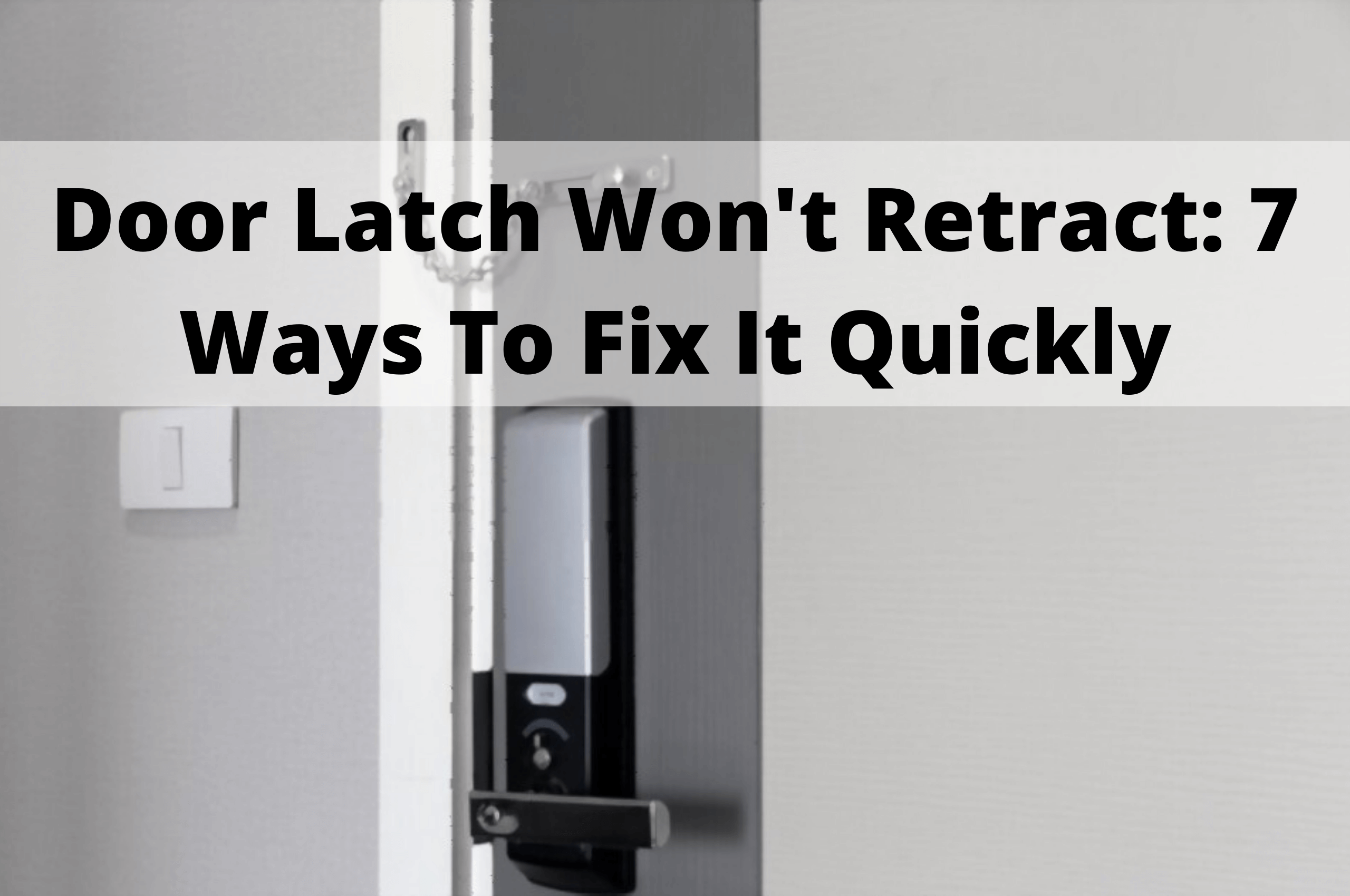Troubleshooting Common Bedroom Door Issues

So, your bedroom door is stuck, and you’re like, “What the heck?” It’s the worst, right? Don’t worry, we’ve all been there. It’s time to get detective-mode on and figure out what’s going on.
Identifying Potential Causes
First things first, you need to figure out why your door is being a pain. Here’s a breakdown of some common culprits:
- Obstructions: Is there something blocking the door? Like, a rug, a pile of clothes, or maybe your pet decided to take a nap in front of it? Check for anything that might be in the way.
- Warped Frame: Over time, wooden frames can warp, causing the door to rub against the frame. This can happen because of humidity, temperature changes, or just plain old age.
- Swollen Wood: Wood expands when it absorbs moisture. If the door or frame has gotten wet, it could have swollen, making it difficult to open or close.
- Misaligned Hinges: Hinges can loosen over time, causing the door to sag and rub against the frame. This can also happen if the screws holding the hinges in place have come loose.
Addressing Obstructions
This is the easiest fix. Just remove anything that’s blocking the door. It’s like, duh, right? But you’d be surprised how often this is the problem.
Adjusting Hinges
If your door is rubbing against the frame, you might need to adjust the hinges. Here’s how:
- Identify the problem hinge: Look for the hinge that’s causing the most friction. You’ll probably see wear and tear on the door or frame near that hinge.
- Loosen the screws: Use a screwdriver to loosen the screws that hold the hinge to the door and the frame.
- Adjust the hinge: Gently tap the hinge with a hammer to adjust its position. If the door is rubbing on the top, move the hinge slightly upward. If it’s rubbing on the bottom, move the hinge downward.
- Tighten the screws: Once the door is aligned properly, tighten the screws on the hinge.
Sanding Down Swollen Wood
If the wood has swollen, you can try sanding it down to make it thinner. Here’s how:
- Choose the right sandpaper: Use a fine-grit sandpaper to avoid damaging the wood. Start with 120-grit sandpaper and then move to a finer grit if needed.
- Sand the affected areas: Gently sand down the swollen areas of the door or frame. Don’t sand too much, or you’ll create a dip in the wood.
- Clean up the dust: Use a damp cloth to wipe away any sanding dust.
Using Shims for Alignment
If the door is misaligned, you can use shims to create a better fit. Here’s how:
- Choose the right shims: Use thin, flexible shims made of wood or metal. You can find them at most hardware stores.
- Insert the shims: Place the shims between the door and the frame where the door is rubbing. You may need to use multiple shims to get the right fit.
- Secure the shims: Once the door is aligned, you can secure the shims in place with a small amount of wood glue or a few tacks.
Addressing Door Lock Problems: Bedroom Door Won T Open

Sometimes, even the most solid bedroom doors can throw you a curveball, and the culprit is often the lock. Whether it’s a stubborn latch, a broken keyhole, or a faulty locking mechanism, a locked door can feel like a major inconvenience. But don’t worry, with a little know-how, you can tackle these issues like a pro!
Jammed Latch
A jammed latch is a common problem, often caused by dirt, debris, or even a misaligned door. It’s like your door is trying to say, “Hold up, I need a break!” Here’s how to deal with it:
- Check for Obstructions: First things first, check the latch itself for any visible obstructions. Maybe a stray hair or a tiny piece of paper got stuck in there. Use a small tool, like a toothpick or a paperclip, to carefully remove any debris.
- Lubricate the Latch: If the latch is just a bit stiff, a little bit of lubricant can do wonders. Use a dry graphite lubricant or a silicone-based spray, making sure to apply it sparingly to avoid clogging the mechanism.
- Adjust the Door: If the latch is misaligned, you can try adjusting the door. Look for screws on the strike plate (the part of the doorframe the latch goes into). Adjusting these screws can help align the latch and solve the jamming issue.
Broken Keyhole, Bedroom door won t open
A broken keyhole is a real bummer, especially when you’re in a hurry. But don’t panic! It’s usually caused by a worn-out keyhole or a broken key. Here’s how to tackle it:
- Remove Obstructions: Start by checking if there’s anything stuck in the keyhole. A small piece of metal or a broken key fragment could be blocking the key from entering. Use a small tool, like a toothpick or a paperclip, to carefully remove any debris.
- Replace the Keyhole: If the keyhole is severely damaged, replacing it might be your best bet. This usually involves removing the entire lock mechanism and installing a new one. It’s a bit more involved, but it’s the most effective solution for a broken keyhole.
Faulty Locking Mechanism
A faulty locking mechanism can be a real pain. It might not latch properly, or the key might turn without actually locking the door. This can leave you feeling vulnerable, like your door is saying, “Come on in, I’m not really locked!” Here’s how to handle this:
- Test the Mechanism: First, check if the lock is working properly. Try locking and unlocking the door a few times. If the latch doesn’t engage properly or the key doesn’t turn smoothly, there’s a problem with the locking mechanism.
- Lubricate the Mechanism: If the lock feels stiff or sluggish, try lubricating it with a dry graphite lubricant or a silicone-based spray. Apply it sparingly to the lock cylinder and the latch mechanism, avoiding any areas that could be easily clogged.
- Replace the Lock: If lubrication doesn’t fix the problem, you might need to replace the entire lock. This is a more involved process, but it’s the most effective solution for a faulty locking mechanism.
Door Hardware and Security Considerations

Choosing the right door hardware can significantly impact your home’s security and overall aesthetic appeal. Understanding the various options available and their security features is crucial in making an informed decision.
Door Hardware Options
A wide array of door hardware options are available, each offering unique features and security levels. Here’s a breakdown of some common choices:
| Hardware Type | Features | Security Level |
|---|---|---|
| Handles | Available in various styles and materials, including lever handles, pull handles, and T-handles. Offer ease of use and accessibility. | Moderate. Handles can be easily pried open with tools, but some models offer additional security features like deadbolt mechanisms. |
| Knobs | Traditional and widely available, offering a variety of styles and materials. | Moderate. Knobs can be easily turned with a tool, but some models offer additional security features like locking mechanisms. |
| Locks | Offer a range of security features, including deadbolts, lever handles with locking mechanisms, and smart locks. | High. Locks provide a greater level of security compared to handles and knobs, particularly deadbolts, which are resistant to forced entry. |
Lock Types and Security Features
Different lock types offer varying levels of security. Here’s a comparison of common lock types:
Deadbolts
Deadbolts are considered the most secure type of lock. They engage a bolt that extends into the doorjamb, making it difficult to force open. Deadbolts are typically installed on the exterior doors of homes, providing an extra layer of security.
Lever Handles
Lever handles offer ease of use and accessibility, especially for individuals with limited mobility. However, lever handles can be more vulnerable to forced entry than deadbolts. Some lever handles incorporate locking mechanisms, providing additional security.
Smart Locks
Smart locks offer advanced security features, including keyless entry, remote access, and automatic locking. They can be controlled via a smartphone app, providing convenience and security. Smart locks are becoming increasingly popular, offering a modern and secure alternative to traditional locks.
Maintaining Door Security
Maintaining door security is crucial in protecting your home from unauthorized access. Here are some tips:
– Regularly inspect your door hardware for signs of wear and tear. Replace any damaged or malfunctioning parts promptly.
– Ensure your doorjamb and frame are securely attached to the wall. Loose or damaged frames can compromise the security of your door.
– Consider installing a security system or alarm. A security system can deter potential intruders and provide immediate notification in case of a break-in.
– Be mindful of your surroundings and report any suspicious activity to the authorities. Staying vigilant and aware of your surroundings can help prevent potential security threats.
Choosing the Right Hardware
When choosing door hardware, consider your individual needs and security requirements. Factors to consider include:
– Budget: Door hardware prices can vary significantly, depending on the material, style, and features.
– Security needs: Determine the level of security required for your home and choose hardware that meets your needs.
– Ease of use: Consider the accessibility requirements of your household members and choose hardware that is easy to use.
– Style: Select door hardware that complements the overall aesthetic of your home.
